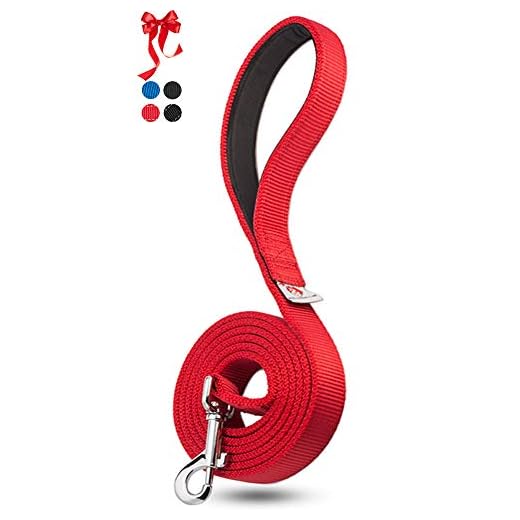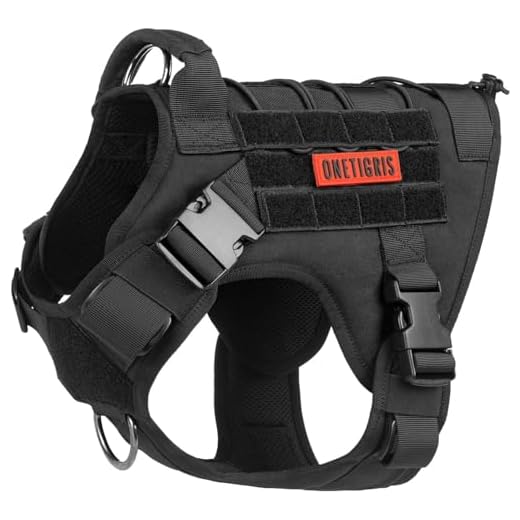




For an expecting canine, the ideal duration for outdoor excursions typically ranges between 20 to 30 minutes. This timeframe allows for sufficient physical activity without overwhelming her. It’s crucial to monitor her energy levels and comfort during these outings, adjusting the time as needed based on her individual needs and stage of pregnancy.
During early stages, she may still enjoy her usual routines. As her belly grows, consider shorter, more frequent jaunts rather than prolonged adventures. Keep an eye on her behaviour; signs of fatigue or reluctance to continue should prompt a return home. Remember, the goal is to keep her active while prioritising her well-being and that of her developing puppies.
In warmer weather, opt for early morning or late evening strolls to avoid overheating. Hydration is key, so bring water along to keep her refreshed. Each pup is unique, so tailoring the activity based on her specific requirements will contribute positively to her health during this special time.
Recommended Duration for Exercising Your Expecting Canine
Limit outdoor sessions to 20-30 minutes, depending on your furry companion’s fitness level and stage of pregnancy. Observe her behaviour; if she shows signs of fatigue, it’s best to cut the outing short. Regular, gentle exercise is beneficial, but avoid strenuous activities that could cause discomfort.
Signs of Overexertion
Be attentive to her body language. If she starts panting heavily, lagging behind, or seeking shade, it’s time to head home. Hydration is crucial; ensure she has access to fresh water before and after your time outside. Splitting walks into shorter segments throughout the day may be more suitable than a single long excursion.
Environmental Considerations
The weather plays a significant role. During warmer months, opt for early morning or late evening strolls to prevent overheating. In colder conditions, consider protective gear for her paws. Always choose safe, familiar areas for her outings to minimise stress.
Understanding the Stages of Canine Gestation
The canine gestation period typically lasts around 63 days, divided into three distinct phases: early, mid, and late stages. During each of these periods, your furry companion’s needs and behaviours will shift significantly.
Early Stage (Days 1-30)
In the first month, your pet may exhibit minimal changes. Some might experience slight weight gain, while others may remain the same. It’s crucial to monitor her diet and ensure she’s receiving proper nutrition. Consider consulting a vet about the best raw dog food delivery service to provide optimal nourishment.
Mid Stage (Days 31-45)
As the pregnancy progresses, more noticeable changes will occur. Expect an increase in appetite and perhaps some lethargy. This is a time when gentle exercise can be beneficial. Keep her calm and avoid strenuous activities. Observe her behaviour closely; she may seek more affection or prefer solitude. Providing a comfortable space will be helpful.
During this period, regular vet check-ups are advisable to ensure everything is proceeding smoothly. Monitoring her health closely can help catch any potential issues early.
Late Stage (Days 46-63)
In the final weeks, your companion’s belly will become noticeably larger. It’s essential to prepare for whelping by creating a safe, quiet area for her to give birth. Limit physical activity during this time, focusing instead on comfort and peace.
Being attentive to her needs during each stage of gestation will not only support her but also prepare you for the joys of welcoming new puppies into your life.
Signs Your Expecting Canine Needs More or Less Exercise
Pay close attention to your furry friend’s behaviour. If she seems restless, excessive energy might indicate the need for increased physical activity. Conversely, lethargy or reluctance to move can signal that she requires a break or reduced exertion. Always observe her reactions during outings to gauge her comfort level.
Signs Indicating More Activity
Here are some indicators that your canine companion may benefit from more exercise:
| Sign | Action |
|---|---|
| Excessive barking or whining | Increase duration of playtime or strolls |
| Restlessness indoors | Introduce short, frequent outdoor sessions |
| Engaging with toys more than usual | Incorporate interactive games during exercise |
Signs Indicating Less Activity
Watch for these signs that may suggest your canine should slow down:
| Sign | Action |
|---|---|
| Frequent panting or heavy breathing | Reduce exercise intensity and duration |
| Hesitating to follow you outside | Limit outings to essential bathroom breaks |
| Unwillingness to engage in play | Consider shorter, low-energy activities |
Adjusting the level of activity based on these signs will help ensure your companion remains healthy and comfortable throughout her pregnancy. Always consult with your veterinarian if you’re unsure about her exercise needs.
Recommended Walking Durations for Each Trimester
For the first trimester, aim for brief outings of around 10 to 15 minutes per session. This period is crucial for development, and keeping exercise gentle helps avoid stress.
During the second trimester, increase the duration to about 20 to 30 minutes. At this stage, energy levels may rise, so moderate activity is beneficial. Just watch for signs of fatigue.
In the third trimester, shorten sessions again to 15 to 20 minutes. As your pet approaches delivery, it’s important to keep walks light and infrequent to ensure comfort and avoid strain.
Always observe your furry friend’s behaviour. Adjust the time spent outdoors based on her energy and comfort levels. If she seems eager to explore or is lagging behind, be ready to adapt.
Tips for Safe Walking with a Pregnant Dog
Keep sessions short and sweet; aim for 10 to 20 minutes depending on your companion’s condition. Monitor her behaviour closely during outings.
- Choose the right time: Early mornings or late evenings are ideal to avoid the heat, especially in warmer months.
- Use a supportive harness: If your furry friend is larger, a harness can provide better control and comfort than a collar.
- Plan your route: Stick to flat, even surfaces to reduce the risk of slips or falls. Avoid busy roads where stress levels may rise.
- Keep her hydrated: Always carry water for her, especially on warmer days. A portable bowl comes in handy!
- Be mindful of her energy: If she seems tired or reluctant to continue, it’s time to head back home.
Establish a routine that suits her needs, adjusting as her belly grows. Regular, gentle exercise helps support her health, so keep it balanced.
- Watch for signs of discomfort: If she pants excessively or is hesitant to walk, pause for a break.
- Encourage slow exploration: Allow her to sniff around; this engages her mind and keeps her relaxed.
- Introduce new surroundings gradually: If venturing to new places, do so in small increments to avoid overwhelming her.
Finally, enjoy the special moments together. These outings strengthen your bond and offer a wonderful opportunity to observe any changes in her behaviour and energy levels.
When to Consult a Veterinarian About Exercise
Consult a veterinarian immediately if you notice unusual behaviour or signs of discomfort in your furry friend. An increase in panting, limping, or reluctance to engage in physical activity can indicate that something isn’t right. If your four-legged companion shows signs of distress or fatigue after light activity, it’s time to seek professional advice.
Physical Signs to Monitor
Observe your canine closely. If there’s swelling in the abdomen, excessive drooling, or vomiting, it’s crucial to reach out to a vet. These symptoms may suggest complications that require immediate attention. Regular check-ups during the gestational period can help catch any potential issues early.
Behavioural Changes
Changes in appetite or mood can also signal the need for a vet’s input. If your companion seems unusually lethargic or irritable, this may indicate discomfort or health concerns. Frequent trips to the clinic can help ensure everything is progressing smoothly. Always err on the side of caution; your furry friend deserves the best care possible.
FAQ:
How long should I walk my pregnant dog each day?
The duration of walks for a pregnant dog can vary based on her fitness level and stage of pregnancy. Generally, short walks of about 20 to 30 minutes are recommended, keeping the pace moderate. As the pregnancy progresses, you may need to reduce the length and intensity of the walks to ensure her comfort and safety.
Are there any signs that indicate I should shorten my dog’s walks while she is pregnant?
Yes, there are several signs to watch for. If your dog seems fatigued, is panting excessively, or shows reluctance to walk, it may be time to shorten her walks. Additionally, if she displays any signs of distress or discomfort, consult your veterinarian to determine the best course of action.
Can my pregnant dog still enjoy outdoor activities, or should I limit her exercise?
While it is important to limit strenuous activities, your pregnant dog can still enjoy light outdoor activities. Gentle walks and some playtime in a safe environment can help keep her mentally and physically stimulated. Always monitor her response and adjust the activities based on her energy levels and comfort.
What precautions should I take while walking my pregnant dog?
When walking your pregnant dog, it is important to keep her on a leash to prevent any sudden movements that could cause injury. Choose calm environments away from heavy traffic or aggressive dogs. Always carry water to keep her hydrated, and be aware of her condition, adjusting the walk duration and intensity as needed.







